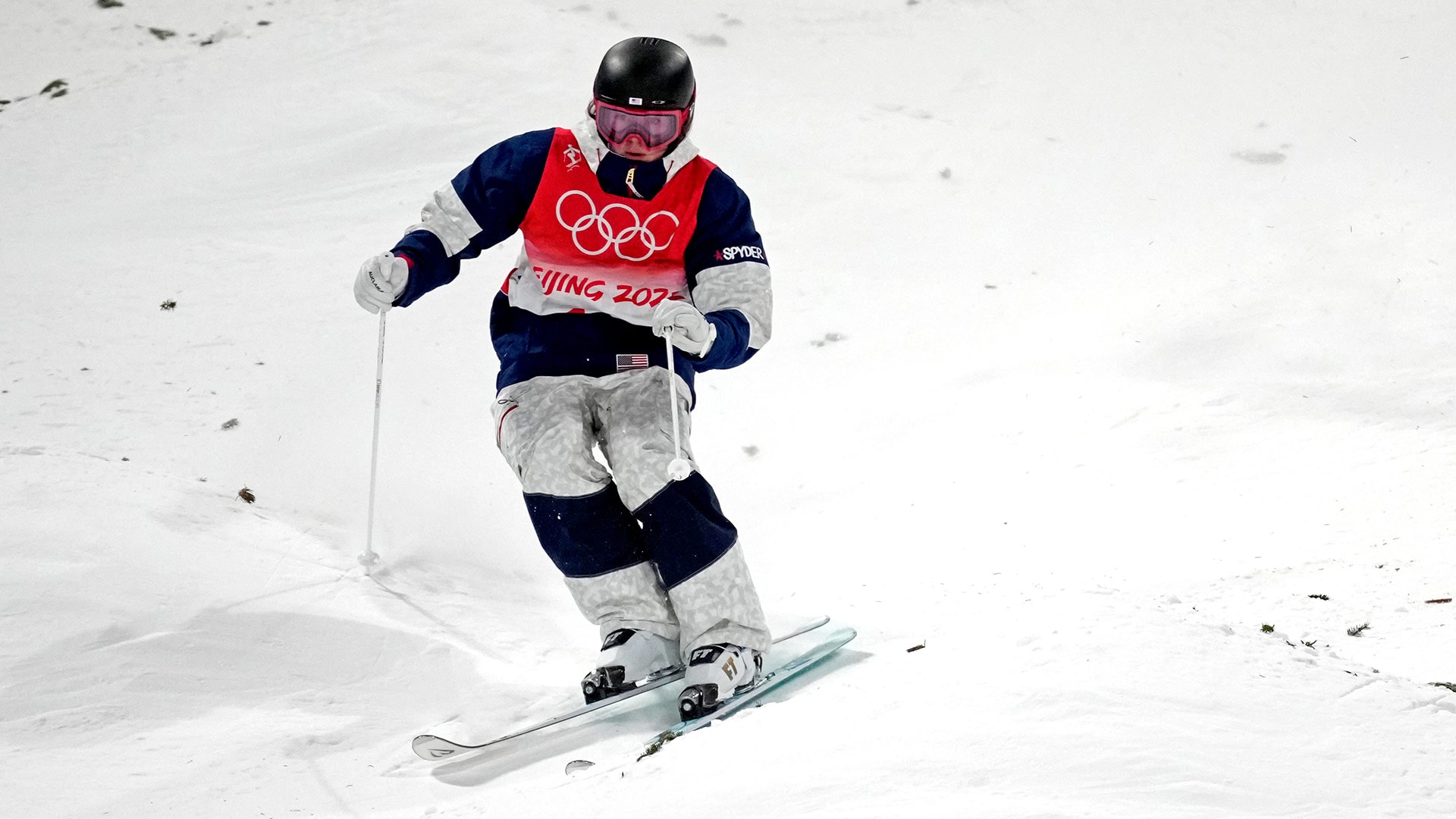What are the rules for Olympic moguls?
Each skier takes an individual run through the mogul course. Judges evaluate aspects of the run, and a score is awarded based on three components (turns, air and speed). The scores determine each skier’s placement in the final results.
How does the scoring work for Olympic moguls?
Each run receives a score of up to 100 points, with the three components weighted as follows:
- Turns: 60%
- Air: 20%
- Speed: 20%
Each of the three components is described in more detail in an earlier section.
In total, there are seven judges for a moguls competition. Five of those judges evaluate turns scores, and the other two evaluate air scores.
What is the competition format for moguls at the Olympics?
Men’s and women’s moguls are divided into two qualifying rounds and a series of final rounds.
How do the Olympic moguls qualifying rounds work?
In the first qualifying round, all 30 skiers take one run, and the top 10 advance directly to the final.
The remaining 20 skiers compete in the second qualifying round and take one run each. Afterward, 10 more skiers advance to the final. Skiers can advance based on either their first- or second-jump score, whichever is higher.
At the 2026 Winter Olympics, the two qualifying rounds will happen on separate days. None of the scores from either qualifying round carry over to the final.
How do the Olympic moguls final rounds work?
The moguls final consists of three rounds, and skiers are eliminated at the end of each round. All participating skiers take one run per round. Scores do not carry over between any of the rounds.
In Round 1, the field is trimmed from 20 skiers down to 12. In Round 2, the field is cut even further from 12 skiers down to six.
The final-six skiers participate in Round 3, and the scores from that round determine the final medal results.
How is the start order determined for the Olympic moguls final rounds?
For Round 1 of the moguls final, the start order is the inverse of the qualification results, so the skier with the lowest ranking goes first and the top-ranked skier goes last.
For Rounds 2 and 3, the start order is the inverse of the previous round’s results, so the top skier from the previous round goes last.
